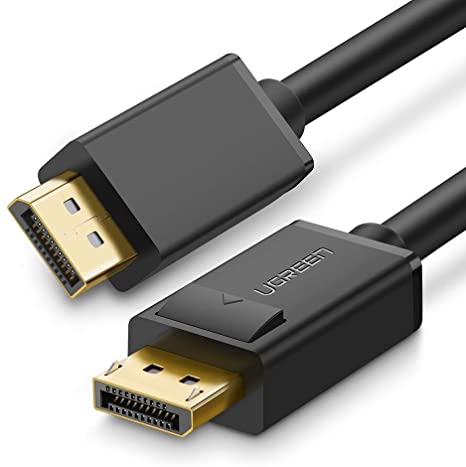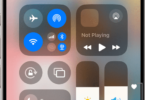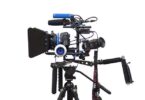One of the last things you want to get bogged down in when it comes to connecting a machine to a monitor (or choosing a monitor to buy) is a choice about the connections you need. And the fact is, many people overthink it — it doesn’t matter in most cases. It can happen when new technologies begin to overlap, for example, when HD made way for 4K. But then you typically have no choice; for example, 8 K currently only works with DisplayPort 1.4. Let us review DisplayPort Vs HDMI: Which is Better? in this blog post
DisplayPort Vs HDMI, which is better?
For general usage — and a single 4 K monitor is no longer a particular case — then it matters not. In general, you’re probably better off with HDMI simply because, in addition to HDMI, monitors with DisplayPort (DP) appear to be costlier.
But if you’re one of the edge cases you need to think about it — for gaming, colour-critical jobs, business travel, or configurations for multiple monitors — here are some guidelines.

On-road
Suppose you’re travelling for business and want to hook up to monitor at different locations. In that case, this is HDMI all the way (and version doesn’t make a difference). That’s the most common type of connection. You might want to make sure that your laptop also has a built-in full-size HDMI connection. At the same time, you can use either USB-C-to-HDMI or micro HDMI-to-HDMI dongles, they are easy to lose, and you don’t want to spend the first 20 minutes of your meeting hunting for one. And any laptop that is light enough to tote probably doesn’t have a DP connection anywhere, anyway.
Is HDMI or DisplayPort which is better for gaming?
For games … ugh. There are no simple solutions since that opens the worms trap of “AMD vs. Nvidia vs. neither.” If you already have a monitor with a DP connector and a corresponding graphics card, use the DP, only because it gives you the most ways to configure adaptive refresh. HDMI is the budget-friendly alternative if you’re trying to choose a display. Still, if you have DP, you’ll have more choices if you’re looking to upgrade to a new graphics card or add an external GPU to it shortly. If you have an Nvidia card and want to use G-Sync, DP is better; FreeSync might be better over DP as well.
Multiple systems
You might want (or need) both of these for multi monitor setups. You may only have one of each type of connection depending on your graphics card, anyway, and if you are forced to daisy the DP chain, it may limit the resolution options. (For multi-computer setups — connecting two computers to a single monitor — the form of connection is less important than the display features)
DisplayPort Vs HDMI Differences:
Let’s find out the differences between these and to do so read our article i.e. DisplayPort vs HDMI. If, however, you wish to make up your own mind, here are some factors to consider:
If a feature includes a particular version of one of the specifications, that means it needs to be accessible on both the display and the graphics card. In other words, you will not get HDR if your graphics card uses DP 1.4, but your display is DP 1.2.
DP 1.2 and later supports daisy chaining, allowing you to drive off a single output connection from more than one monitor. The number of monitors depends on their resolutions, and most likely you’ll need a splitter or centre. However, it is not enabled automatically so check the display specs.
Adaptive-sync technologies help to synchronize the frame-rate performance of games with display refresh rates to reduce transient artifacts such as tearing (where you see elements of two frames simultaneously). For this decision, you only need to know that AMD FreeSync works on both HDMI and DP while Nvidia’s G-Sync works only over DP. Nvidia G-Sync does not operate over USB-C however (although it is technically DP) because USB does not connect directly to the graphics processor.
HDMI is almost universal on standard monitors — i.e., anywhere in any conference room — while DP is usually available only on higher-end, more costly versions.
How to connect HDMI device to a monitor?
Mini DP, typically found on laptops, and alt-mode USB-C are DP 1.2; USB-C with alt-mode support is essentially the successor to Mini DP.
DisplayPort looks similar to HDMI but is a connector more common on PCs than TVs. It also allows for high-definition video and (in many cases) audio, but it has very different standards. You’ll definitely notice all of the following on modern monitors:
- DisplayPort 1.2: Supports up to 4 K at 60Hz, and certain 1.2a ports can also support FreeSync from AMD
- The DisplayPort 1.3: Supports up to 4 K at 30Hz or 120Hz or 8 K
- DisplayPort 1.4: Supports 60Hz and HDR for up to 8 K
- And the DisplayPort 2.0 (currently scheduled for late 2020): Supports 16 K with 60Hz HDR and 80Hz 10 K without HDR
Show with HDR includes DP 1.4 or HDMI 2.0a (or later). This means Nvidia GeForce GTX 1050 (i.e., Pascal) and AMD Radeon RX 400 series or newer cards on the graphic card side. (Nvidia’s RTX series supports HDMI 2.0b, which is required to view Hybrid Log Gamma HDR, which is currently only of real interest when editing HDR video.)
8 K currently requires two 60Hz DP 1.4 connections or a single 30Hz connection. And a Group of Monsters.
As of today, no monitors or graphics cards have connections for next-gen HDMI 2.1 that support generic variable refresh rates (i.e. will function with a TV), above 5 K resolutions, and Dynamic HDR. However, some graphics cards will receive firmware updates to allow compatibility.
If your device has no discrete graphics, it will probably have just an HDMI link, anyway.
Which is better for 144hz?
If we talk about DisplayPort vs HDMI, for 144hz DisplayPort will be superior choice than HDMI.
Here, we have uphold the topic DisplayPort vs HDMI. Hope it will help you to get answer of your questions. If you have any queries, feel free to comment in the below section. We will try to reach you as soon as possible.







